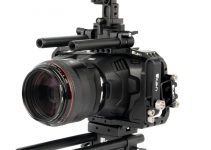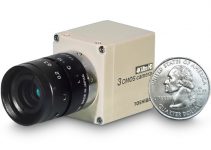Glidecams and gimbal stabilizers have become a staple in the filmmaking toolkit. They provide users with amazingly stable footage, eliminating almost all of the jitters and shakiness associated with holding a camera.
While these systems have become very popular in recent years for providing stunning results, the biggest drawback is the price tag they usually are associated with, which ranges depending on the maximum load capacity and size of the camera, as well as the technology involved in the stabilization process (gimbal or counterweight system).
Of course, there are some alternative methods you could try out in case you don’t want to splurge on these systems. Sidney Diongzon shows off how to pull off a gimbal/glidecam shot on the cheap by utilizing a few unconventional tricks.
The first step into achieving this technique is to make sure you’re using a camera that can shoot at a high frame rate, such as the Panasonic GH5 or the Sony A7S II. All in all, you’ll want to use a camera that shoots at least in 60 frames per second, although the higher the frame rate, the more stable (but slower) the footage will be. Keep in mind that you will be slowing down the video in post so this may not work if you’re looking to stabilize objects moving at regular speed.
The main technique to achieving the steady motion is with a simple body technique. Instead of moving your arms forward and backward or left to right, simply shift the balance of your knees. For example, let’s say you want to do a shot pushing towards a subject.
Instead of moving your entire body forward, separate your feet apart wider than your shoulder width with one foot back and one foot in front. Lean back while putting all your weight on your back leg. Then, slowly shift the weight to your front leg, while using your hand to carefully adjust the angle of the camera as you move.
Once you slow down the footage in post, you should be able to get a shot that’s a lot steadier than normal. Keep in mind that this technique isn’t perfect and may take some time to get right. With a little practice and some patience, though, you should be able to end up with a shot that feels a bit more cinematic than just hand-holding a camera and hoping for the best while stabilizing it in post.
[source: Sidney Diongzon]
Disclaimer: As an Amazon Associate partner and participant in B&H and Adorama Affiliate programmes, we earn a small comission from each purchase made through the affiliate links listed above at no additional cost to you.




I’ve used similar physical technique for maybe decades, a bit more too it than that. But simply, you are concentrating on stabilising the camera position in space with you around it. I’ve done stuff that not even professional stabilising rigs can do, but it does look weird.